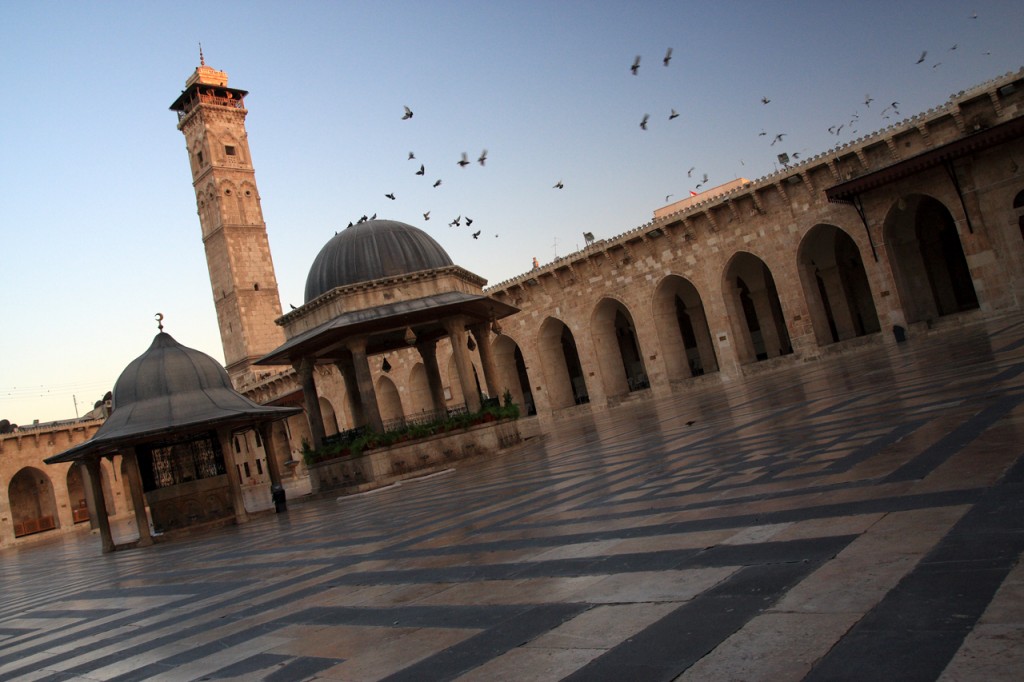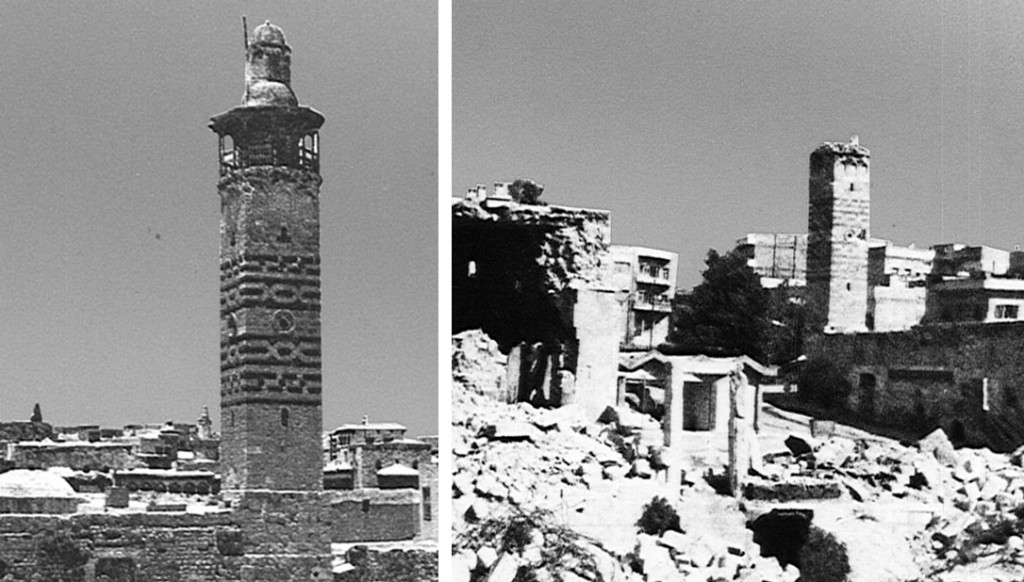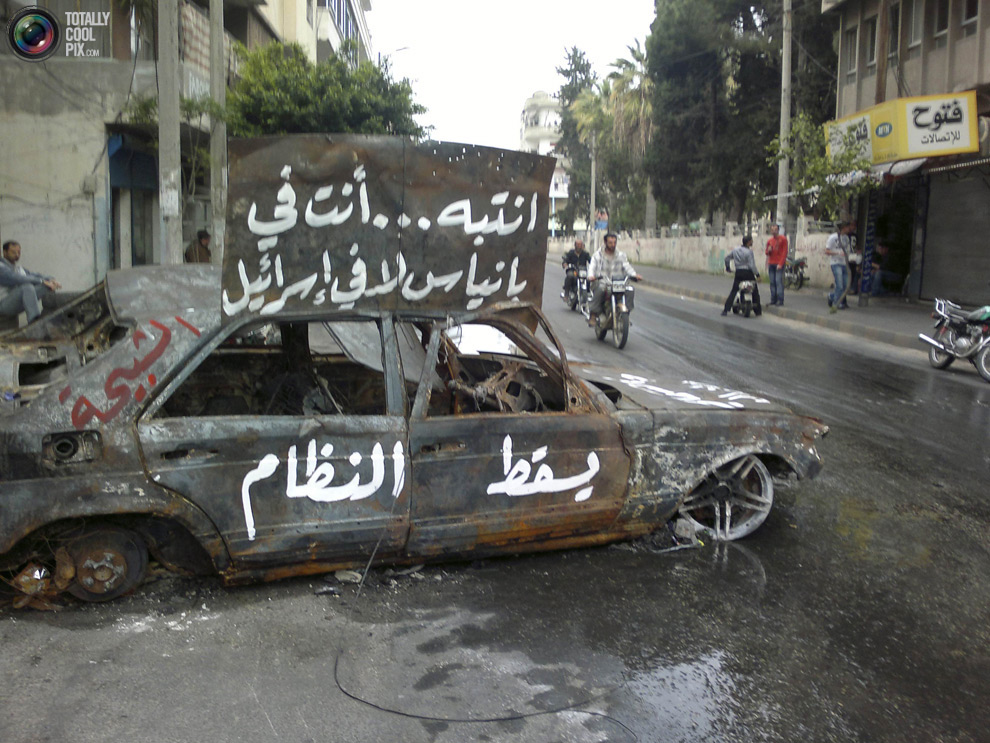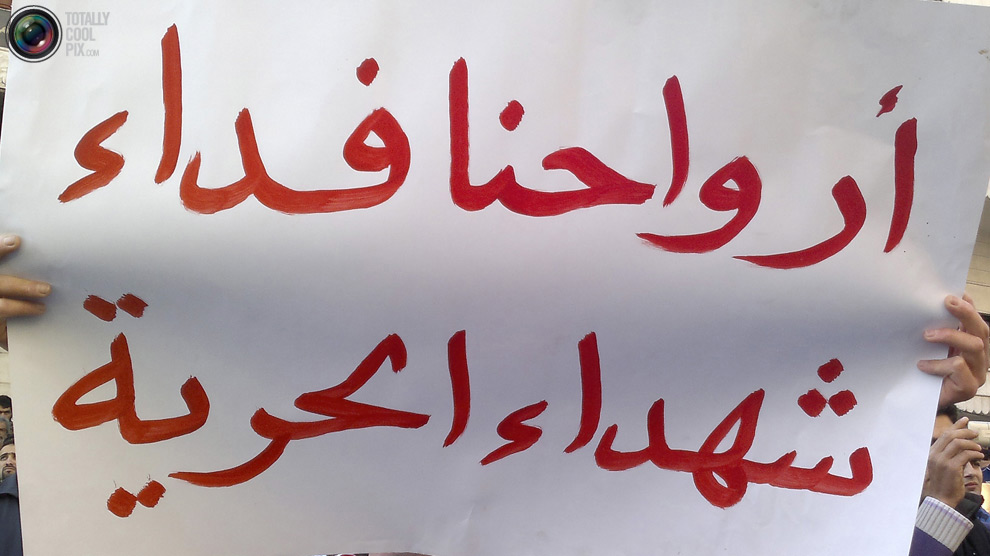By Islam El Shazly
In 1260 CE the Mongol horde under Hulagu ravaged Syria, The Great Mosque and the Citadel of Aleppo were razed and most of the inhabitants were killed or sold into slavery.
In 1400 CE Timur, also known as Tamerlane or Timūr-e Lang, the Turco-Mongol conqueror, invaded Syria, sacked Aleppo then besieged and captured Damascus. The Umayyad Mosque was razed and most of the inhabitants were massacred, the rest were sold into slavery. The lucky ones were the artisans; they were spared and sent to Samarqand, the capital of the Timurid Empire. The unlucky ones had their heads piled up in a field outside the north-east corner of the walls, where a city square still bears the name burj al-ru’us, literally “the tower of heads”.

The Great mosque of Aleppo, it was badly damaged by Hulagu's Mongol horde in 1260, and later rebuilt after the city was freed by the Mamelukes. By yeowatzup, Flickr.
It will take a little over 500 years before Syria suffers its next wave of atrocities. Only this time it will come from Syria’s own leaders Hafez Al-Assad’s and later his son, Bashar Al-Assad.
Historically and up until Syria became a French mandate, Syria was synonymous with the Levant, or Bilad-Al-Sham. It included Lebanon, Palestine, Jordan and Alexandretta (now part of Turkey). Needless to say modern Syria does not include these territories any more, thanks to France and the UK and their Sykes-Picot Agreement. Syria has been in turmoil ever since.
March 15, 2011, the day one of the most brutal regimes in history was shaken to the core; Al-Assad’s Alawi/Baathist Empire was told enough is enough, soon insha’Allah Bashar’s name will be nothing but history, and the only legacy he will leave behind is hatred and spite towards him, his family, his party and all who supported him; a very vile legacy indeed.

A section of Hama before the government attack in 1982 (Left), and the same section after the attack (Right).
Hafez Al-Assad has earned a place in history as the “leader” who ordered the attack described as among “the single deadliest acts by any Arab government against its own people in the modern Middle East”. The vast majority of the victims were civilians. The death toll is estimated to be between 10,000 and 40,000. The year was 1982, the massacre of Hama.
Bashar would closely follow his father’s footsteps; he had a zero-tolerance policy towards any form of dissent, you so much as breath the wrong way, you would be taken were the sun doesn’t shine.
The Syrians have had enough though, and the fire that ignited in the hearts of their brethren in Tunisia, Egypt, and Libya paved the way for their own uprising.

A burned car is seen in the Syrian port city of Banias April 17, 2011. Thousands of Syrians chanted slogans calling for greater freedom at independence day rallies on Sunday, witnesses said, a day after President Bashar al-Assad promised to lift emergency law. The writing reads, Attention... you are in Banias not in Israel. REUTERS/Stringer
Hafez Al-Assad, an Alawite, came into power in 1970. The Ba’ath party that he belonged to was active since the forties; it was – and still is – dominated by Alawites who saw in it a means to hold power in a country that would never allow them to rule otherwise. Ba’athists fully seized power in a coup in 1963, and hopefully their reign of terror will be ending soon with the eminent fall of Bashar Al-Assad.
The Ba’ath’s list of crimes amount to genocide, they have been killing their own countrymen since the 60s, they have deployed the military and their thugs, AKA Shabbiha, to attack and crush all forms of dissent.
For all Al-Assad senior and junior’s bravado, they never once made an attempt to reclaim the occupied Golan Heights. Not once since their half-hearted attempt in 1973 have they so much thrown a rock over the Golan Heights. They would, however, employ the full might of the military to kill their own people.
“أسـدٌ عليَّ وفي الحروبِ نعامـةٌ”
A Lion while fighting civilians, an Ostrich when in war against an enemy.
Syria, Bilad Al-Sham, has been blessed by Allah as mentioned in the Quran; it holds a special place in the hearts of all Muslims. Most of Allah’s Prophets and Messengers passed through it or lived in it at one point in their lives; that made Al-Sham a target of aggression throughout the ages, but it also made the people of Syria resilient and perseverant. They are still here, and all there would be conquerors are gone, most not even remembered, others, especially the hellish ones, are only remembered in contempt.
The difference between Bashar Al-Assad and Qaddafi and Tamerlane is purely cosmetic, he’s soft spoken, highly educated, and spent most of his life in the west. He’s smartly dressed, and along with a dream wife, he sold himself to the Arab world as the next brand of leader that will lead them into future glories and a renewed vitalized Arab world. The Syrians, his people, discovered the horrors behind his gentle façade, by then it was a little late to remove him.

A protester holds a placard during a demonstration in the Syrian port city of Banias April 26, 2011. Syrian protesters in Banias chanted the people want the overthrow of the regime on Tuesday as forces deployed around the small coastal city for a possible attack, a rights campaigner in contact with Banias said. The placard reads, Sacrifice our lives, the martyrs of freedom. REUTERS/Handout
Not too late though, they are fighting back, and with the fall of Qaddafi, Bashar is soon to follow straight into the trash bin of history.
Syria should not expect any help or assistance from the west or from NATO, they don’t have oil! And they shouldn’t expect help from the still in power Arab leaders, the fall of Al-Assad’s regime is going to spell doom for them, just like Mubarak’s did.
Next in line: Yemen.
The Syrian regime has a complete media blackout of the uprising and foreign reporters and photographers are not allowed in the country, even UN delegation was kicked out of the country. Below is a link with some images that managed to get on the internet.
Totally Cool Pix:
April 27, 2011 – The Syrian Protests
For more information and to follow the events of the Syrian Uprising as it unfolds:
2011 Syrian Uprising (wikipedia)









Very nice photos